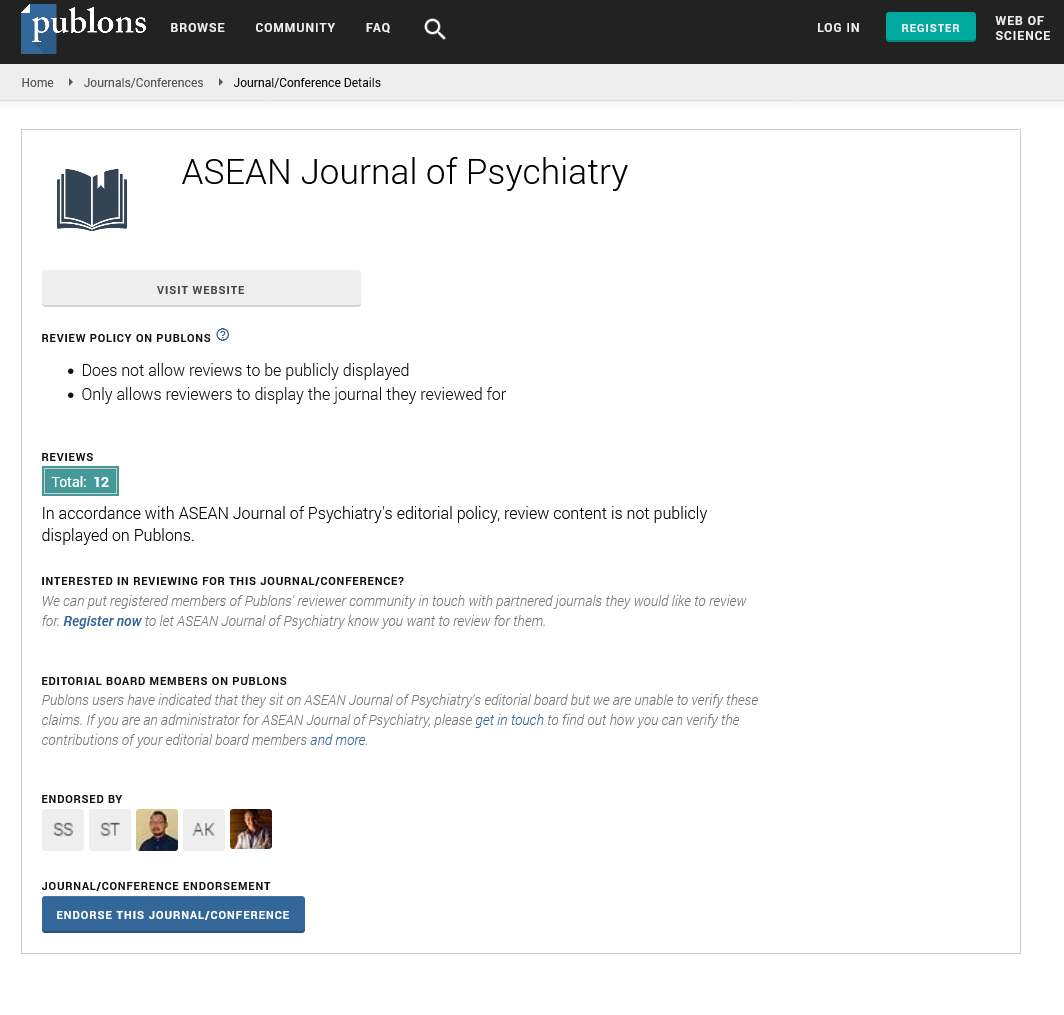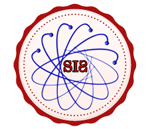Introduction
Educational psychology informs teachers’ perspectives by providing them with evidence- based theories, research findings, and strategies that can enhance their teaching practices. By understanding the principles of educational psychology, teachers can make informed decisions about instructional methods, classroom management techniques, and assessment strategies that are more likely to promote effective learning and development in their students [1]. Teachers’ perspectives influence educational psychology by providing valuable input and feedback to researchers and theorists. Through their experiences in the classroom, teachers can offer insights into the practical implications of educational psychology theories, highlighting what works well and identifying areas that may require further investigation. Their perspectives can contribute to the refinement and development of educational psychology as a field, making it more relevant and applicable to the real-world context of teaching and learning [2].
In program research and program reform, the theoretical basis for changing the general education program is always a “hot issue”. The transformation of the general education program is crucial to meet the demands of a rapidly changing job market and prepare students for the challenges of the 21st century. It requires a multidisciplinary approach that incorporates innovative teaching strategies and technologies. The birth and development of constructivist theory is called a “revolution in current educational psychology” because it has had a tremendous impact on the theory and practice of teaching and education in many nations throughout the world, especially the reform of the general education program [3]. The theory emphasizes the importance of individual differences and the need to tailor teaching methods to meet the unique needs of each student, which has led to a more personalized approach to education. Additionally, it has encouraged the use of technology in the classroom as a means of enhancing learning and engagement. The constructivist program emphasizes the importance of nurturing pupils’ creativity, sense of teamwork, and problem-solving skills. This approach has proven effective in preparing students for the demands of the modern workforce, where collaboration and innovation are highly valued. Furthermore, it has been found to promote long-term retention of knowledge and a deeper understanding of concepts. This theory challenges traditional teaching methods by promoting active learning and student-centered approaches. It encourages teachers to facilitate learning rather than simply imparting knowledge to students. The attention of educators has been drawn to this since it conforms to contemporary standards.
According to Piaget’s theory of cognitive development, schooling should enable both men and women to innovate through creativity, invention, and discovery [4,5]. Piaget believed that education should not only focus on imparting knowledge but also on developing critical thinking skills and problem-solving abilities in individuals, which would allow them to become active and productive members of society. This approach to education would foster creativity and innovation, enabling individuals to make significant contributions to their communities. Yet, as learning is a self-directed, individual activity in which students seek their own experiences, constructivism knowledge is necessary for teaching and learning. Constructivism knowledge emphasizes the importance of active learning, where students are encouraged to explore and discover new concepts on their own. This approach allows for a deeper understanding of the material and helps students develop critical thinking skills. Two theories, notably Piaget’s cognitive constructivist theory of learning and Vygotsky’s theory of social construction, provided the foundation for this study. Piaget’s theory emphasizes the importance of individual exploration and discovery, while Vygotsky’s theory highlights the role of social interaction in learning [6]. By combining these two theories, this study aims to explore how both individual and social factors contribute to students’ understanding and critical thinking skills. It is vital to maintain a full understanding of all system components to be studied in relation to the core principles of student learning. Piaget’s theory emphasizes the importance of individual cognitive development, while Vygotsky’s theory highlights the role of social interaction and cultural context in learning. Therefore, this study aims to explore how these two theories can be applied to understand student learning in a comprehensive manner. The theories of cognitive and social education concur that students generate or construct meaning from their experiences [7]. Furthermore, cognitive theory emphasizes the importance of individual mental processes in learning, while social education theory highlights the role of social interactions and cultural context in shaping learning experiences. By combining these two theories, a more holistic understanding of student learning can be achieved. Thus, Piaget’s and Vygotsky’s theories of learning assist this study’s efforts to guide and construct appropriate learning activities that enhance science processing abilities. Piaget’s theory emphasizes the importance of individual exploration and discovery, while Vygotsky’s theory emphasizes the role of social interaction and collaboration in learning. Therefore, incorporating both theories can provide a comprehensive approach to designing effective science learning activities that cater to different learning styles. The active engagement of a child with his environment, according to Piaget’s theory of intellectual development, is what generates cognitive development. Vygotsky’s sociocultural theory, on the other hand, emphasizes the role of social interaction and cultural context in shaping a child’s cognitive development. This study aims to integrate both theories to design effective science learning activities that take into account both individual and social factors.
Students should not only be passive recipients of instruction; they should actively engage in their education. This means that students should participate in class discussions, ask questions, and take an active role in their own learning process. By doing so, they will not only gain a deeper understanding of the material but also develop critical thinking skills that will serve them well in the future. Active engagement from the youngster may take the form of physical manipulations, visual observations, or internal or mental movement or transformation. The teacher offers background knowledge, but it is the student’s responsibility to investigate a specific occurrence, discover pertinent material, quantify it, produce a hypothesis, and then verify their investigation’s interpretation and predictions by deducing or inducing. This approach to learning is known as inquiry-based learning, which encourages students to take an active role in their education and develop critical thinking skills [8]. Inquirybased learning also helps students to retain information better as they are actively engaged in the learning process, rather than just passively receiving information from the teacher [9,10]. It also prepares them for real-world problem-solving situations where they need to investigate and analyze information to make informed decisions. By engaging in this process, students are able to gain a deeper understanding of the subject matter and develop a sense of ownership over their own learning. It is also considered that interaction between students and teachers facilitates learning, improves communication, and promotes the exchange of ideas. Furthermore, students who are actively involved in the learning process are more likely to retain information and apply it in real-life situations. This approach to education also fosters critical thinking skills and encourages students to become lifelong learners. According to Vygotsky’s, cognitive growth is greatly impacted by other individuals and environmental factors. Vygotsky’s sociocultural theory emphasizes the importance of social interaction in cognitive development, suggesting that learning occurs through collaborative activities and communication with others. Therefore, creating a positive and interactive classroom environment can enhance students’ cognitive growth and academic achievement. Constructivist theory holds that individuals must first construct, comprehend, and remember what they have learnt (cognitive processing of information), then practice and apply their new skills and knowledge to make it more natural, efficient, and a permanent part of their practice (behavioral) [11,12]. Therefore, social interaction and collaboration with others play a crucial role in the learning process as they provide opportunities for individuals to construct knowledge together, receive feedback, and engage in discussions that promote critical thinking and problem-solving skills. Constructivist approaches also emphasize the importance of creating a supportive learning environment that encourages exploration, experimentation, and reflection.
If either of these processes is lacking, learning will fail. The two processes that are crucial for successful learning are attention and motivation. Without attention, the learner will not be able to focus on the material being presented, and without motivation, the learner will not have the drive to engage with the material. Theorists attempted to explain how students learned, emphasizing the significance of condition selection and mental growth. These theories led to the development of various teaching strategies that take into account the learner’s attention and motivation, such as active learning, problem-based learning, and inquiry-based learning. These approaches aim to create a more engaging and interactive learning environment that promotes deep understanding and long-term retention of knowledge. It is challenging to conclude that all learning is founded on a certain idea. Instead, learning is a complex process that involves various factors such as prior knowledge, motivation, and environment. Therefore, it is essential to consider multiple perspectives when studying the learning process. For teachers to have constructivist lessons, Powell and Kalina claimed that cognitive and social constructivism must be utilized [13]. Cognitive constructivism emphasizes the individual’s active role in constructing knowledge, while social constructivism highlights the importance of collaboration and interaction with others in the learning process. Therefore, teachers should integrate both approaches to create a comprehensive and effective learning experience for their students. It is believed that no one hypothesis adequately explains learning. By combining both approaches, teachers can address the strengths and weaknesses of each theory and tailor their teaching methods to meet the diverse needs of their students. This approach can help students develop a deeper understanding of the subject matter and improve their overall academic performance.
Currently, Vietnam is in an important period of program reform, so it is necessary to attach importance to the role of program theory, systematically study program theory (including constructivist theory), facilitate a comprehensive and systematic view, and create the ability to evaluate and choose good and positive experiences from around the world, and avoid one-sided, conservative, dogmatic approaches. By incorporating constructivist theory into their teaching methods, educators in Vietnam can create a more dynamic and interactive learning environment that promotes critical thinking and problem-solving skills. This approach can also help students develop a deeper understanding of the subject matter and better retain information. Furthermore, constructivist theory encourages students to take an active role in their own learning, which can lead to increased motivation and engagement in the classroom. Ultimately, this can lead to better academic outcomes and prepare students for success in their future careers.
Prior to now, there has been a dearth of studies on primary teachers in Vietnam, particularly the designing of teaching methods and forms through experiential activities using the constructivist theory of primary teachers. This research aims to fill this gap by investigating the effectiveness of using constructivist theory in designing teaching methods and forms through experiential activities for primary teachers in Vietnam. The findings of this study could potentially contribute to the improvement of primary education in Vietnam. In order to fill this void, this study evaluates which experiential activities primary teachers are designing by using constructivist theory and following an intervention: the research findings will provide a solid scientific foundation for evaluating the current state of designing experiential activities in the topic according to constructivist theory in elementary schools and suggesting a suitable course design approach for elementary school students. The results of this study could also inform teacher training programs and professional development opportunities to better equip primary teachers with the skills and knowledge needed to design effective experiential activities for their students. Additionally, the findings may have broader implications for education systems in other countries that are seeking to incorporate constructivist theory into their primary education curriculum.
The inquiry commences with a literature review on designing the experiential activity by using constructivist theory of primary teachers. The second section provides a foundational framework for analysis, including the study’s methodology, results, and discussion. The conclusion is contained in the final section.
Methodology
Participant and procedure
The findings surveyed 543 primary teachers
working in 6 localities in the Northern region:
Hanoi Capital, Vinh Phuc City, Ninh Binh City, Cao Bang City, Lao Cai City and Bac Giang City.
The average tenure of teachers is nearly 11 years (Table 1).
Table 1. Demographic variables.
| Demographic variables |
N |
% |
| Qualification |
Pedagogical Practice |
23 |
4.2 |
| College of Education |
168 |
30.9 |
| University of Pedagogy |
341 |
62.8 |
| Graduate School |
11 |
2.1 |
| Working years |
Under 5 years |
177 |
32.6 |
| 5-10 years |
173 |
31,9 |
| 11-15 years |
41 |
7.6 |
| 16-20 years |
48 |
8.8 |
| 21-25 years |
65 |
12 |
| Above 25 years |
39 |
7.1 |
| Working conditions |
Working at a school with difficult facilities and socio-economic conditions |
225 |
41.4 |
| Working at the school has favorable facilities and socio-economic conditions |
318 |
58.6 |
Table 1 shows that the teachers participating in
the survey have a bachelor’s degree or higher, the
highest professional qualification of teachers is a
master’s degree. The teachers are mainly qualified
from university of pedagogy (62.8%), college of
pedagogy (30.9%), pedagogical practice (4.2%),
and graduate school (2.1%). Teachers’ teaching
experience ranges from 1 year to 35 years, with a
mean of 10.69 years. In which, 41.4% of teachers
work in places with difficult facilities and socio-
economic conditions, 58.6% of teachers working
at schools with favorable facilities and socio-
economic conditions. Thus, the majority of teachers
participating in the survey have professional
qualifications that meet and exceed standards,
most teachers have less than 10 years of teaching
experience. The number of teachers participating
in the survey working in a place with favorable
facilities and socio-economic conditions is more
than the number of teachers working in a place
with favorable facilities and economic conditions-
difficult society. From April 2021 to April 2022,
an entire year was devoted to the collection of
data. Participants were given informed consent,
and anonymity and confidentiality rules were
conveyed to them; the information sheet outlined
their obligations and right to withdraw from the
study.
Instrument
The author collects information on the practice of designing experiential activities in a constructivist
primary school subject by using questionnaire
survey methods, conducted using a teacher’s
questionnaire of primary schools in 6 provinces:
Hanoi, Vinh Phuc, Ninh Binh, Cao Bang,
Bac Giang, and Lao Cai. The questionnaire is
designed and collected through Google Form.
The questionnaires were sent to teachers to collect
information, the total number of questionnaires
collected was 543 with complete answers.
Each questionnaire consists of two parts: the
information part of the survey respondents and
the answer to the survey questions. The survey
questions include:
1. Survey of primary school teachers’ perceptions
of experiential learning is done through
a questionnaire including the characteristics
of experiential learning and non-experiential
learning characteristics with answers. are
choices divided by Likert scale with 3 levels:
disagree, agree, strongly agree and are scored
from 1 to 3, respectively;
2. Survey the design of experiential activities
in the subject with questions about criteria,
bases, design process, methods and forms
of teaching with options divided on a Likert
scale of 5 levels: never, rarely, occasionally,
often, very often, and are scored from 1 to 5,
respectively.
Values on the Likert scale are divided into 3 or 5
equal parts and distribute each part corresponding
to a measure value: there are 3 levels: Distance
value=(Maximum-Minimum)/3=(3-1)/3=0.66. Authors define the value fragments: 1.00-1.66
(rounded to 1): Disagree; 1.67-2.33 (rounded to 2):
Agree; 2.34-3.00 (rounded to 3): Strongly agree.
For the Likert scale, there are 5 levels: Distance
value=(Maximum-Minimum)/5=(5-1)/5=0.80. The authors also define the value fragments:
1.00-1.80 (rounded to 1): Never; 1.81-2.60
(rounded to 2): Rarely; 2.61-3.40 (rounded to 3):
Occasionally; 3.41-4.20 (rounded to 4): Regular;
4.21-5.00 (rounded to 5): Very often. The author
determines the value segments as above because
the value segments are divided equally, creating a
balance between each evaluation level.
Results
Teaching methods, teaching forms to organize
experiential activities in the subject according to
constructivism theory
When designing and organizing experiential
activities in the subject according to constructivist
theory, primary teachers also often use a variety of
teaching methods and different teaching methods.
According to the survey results in Table 2, the
teaching methods and teaching forms used most
often by teachers are: Observation (M=4.26;
SD=0.603), Conversation (M=4.13; SD=0.637),
Discussion (M=4.18; SD=0.568), Practice
(M=4.18; SD=0.612), Problem-stating and
Problem-solving (M=4.07; SD=0.603), Games
(M=4.09; SD=0.597) (Table 2).
Table 2. Teaching methods, teaching forms to organize experiential activities in the subject according to constructivist theory.
| Teaching methods |
M |
SD |
| Observation |
4.26 |
0.603 |
| Conversation |
4.13 |
0.637 |
| Storytelling |
3.81 |
0.685 |
| Discussion |
4.18 |
0.568 |
| Practice |
4.18 |
0.612 |
| Investigation |
3.63 |
0.724 |
| Experiment |
3.55 |
0.788 |
| Explanation |
3.99 |
0.698 |
| Role-playing |
3.82 |
0.658 |
| Problem-stating and problem-solving |
4.07 |
0.603 |
| Project |
3.43 |
0.818 |
| Hand making dough |
3.53 |
0.841 |
| Sightseeing |
3.36 |
0.828 |
| Game |
4.09 |
0.597 |
| Contest |
3.62 |
0.719 |
| Drama |
3.56 |
0.723 |
| Club |
3.37 |
0.849 |
There is a difference between teachers in the
two groups when using teaching methods and
teaching forms: Observation, Conversation,
Discussion, Practice, Experiment, Explanation,
Problem-stating and Problem-solving, Project, Hand making dough, Games when designing
experiential activities in the subject according to
constructivist theory (the Sig index of the F-test of
these teaching methods and teaching forms are all
less than 0.05).
Groups of teachers who are working in schools
with difficult facilities and socio-economic conditions
often use these teaching methods and
teaching forms less often than teachers working
in schools with favorable facilities and socio-economic
conditions, the mean score of these teaching
methods and teaching forms in the group of teachers
working in schools with difficult facilities and
socio-economic conditions is often higher than the
mean score of teachers working in schools with favorable
facilities and socio-economic conditions.
Results of a one-way Analysis of Variance (ANOVA) test on the difference in selection between primary
teachers with different teaching experience,
showed that there is no difference between teachers
in groups of seniority when choosing ideas
(p>0.05). Thus, primary school teachers often
use traditional and popular methods and forms of
teaching to organize experiential activities in the
subject according to constructivist theory. Modern
teaching methods, teaching forms: projects, hands
on dough, plays, clubs, etc., are used less often by
teachers.
The results of the independent samples test to
examine the differences in the use of teaching methods and teaching forms in the design of
experiential activities in the subject according to
constructivist theory are shown in Table 3 and Table 4.
Table 3. Independent Samples Test results of the difference in teaching methods, teaching forms to organize experiential activities in the subject according to the constructivist theory of teachers in two groups of schools with facilities and economic conditions - different social.
| |
F |
Sig. |
t |
df |
Sig. (2-tailed) |
Mean Difference |
Std. Error Difference |
95% Confidence Interval of the Difference |
| Lower |
Upper |
|
CAU8.1 |
Equal variances assumed |
10.231 |
0.001 |
-3.39 |
541 |
0.001 |
-0.176 |
0.052 |
-0.279 |
-0.074 |
| Equal variances not assumed |
- |
- |
-3.426 |
499.982 |
0.001 |
-0.176 |
0.052 |
-0.278 |
-0.075 |
|
CAU8.2 |
Equal variances assumed |
22.885 |
0 |
-3.393 |
541 |
0.001 |
-0.187 |
0.055 |
-0.295 |
-0.079 |
| Equal variances not assumed |
- |
- |
-3.482 |
520.972 |
0.001 |
-0.187 |
0.054 |
-0.292 |
-0.081 |
|
CAU8.3 |
Equal variances assumed |
0.032 |
0.859 |
-1.133 |
541 |
0.258 |
-0.068 |
0.06 |
-0.185 |
0.05 |
| Equal variances not assumed |
- |
- |
-1.148 |
503.053 |
0.252 |
-0.068 |
0.059 |
-0.183 |
0.048 |
|
CAU8.4 |
Equal variances assumed |
34.86 |
0 |
-4.328 |
541 |
0 |
-0.211 |
0.049 |
-0.307 |
-0.115 |
| Equal variances not assumed |
- |
- |
-4.408 |
511.494 |
0 |
-0.211 |
0.048 |
-0.305 |
-0.117 |
|
CAU8.5 |
Equal variances assumed |
13.043 |
0 |
-2.543 |
541 |
0.011 |
-0.135 |
0.053 |
-0.239 |
-0.031 |
| Equal variances not assumed |
- |
- |
-2.586 |
508.722 |
0.01 |
-0.135 |
0.052 |
-0.237 |
-0.032 |
|
CAU8.6 |
Equal variances assumed |
0.715 |
0.398 |
-0.666 |
541 |
0.505 |
-0.042 |
0.063 |
-0.166 |
0.082 |
| Equal variances not assumed |
- |
- |
-0.675 |
502.85 |
0.5 |
-0.042 |
0.062 |
-0.164 |
0.08 |
| CAU8.7 |
Equal variances assumed |
7.277 |
0.007 |
1.118 |
541 |
0.264 |
0.077 |
0.069 |
-0.058 |
0.211 |
| Equal variances not assumed |
- |
- |
1.148 |
522.085 |
0.251 |
0.077 |
0.067 |
-0.055 |
0.208 |
|
CAU8.8 |
Equal variances assumed |
5.494 |
0.019 |
-0.064 |
541 |
0.949 |
-0.004 |
0.061 |
-0.123 |
0.116 |
| Equal variances not assumed |
- |
- |
-0.067 |
536.217 |
0.947 |
-0.004 |
0.058 |
-0.118 |
0.111 |
|
CAU8.9 |
Equal variances assumed |
1.559 |
0.212 |
-0.658 |
541 |
0.511 |
-0.038 |
0.057 |
-0.151 |
0.075 |
| Equal variances not assumed |
- |
- |
-0.675 |
520.76 |
0.5 |
-0.038 |
0.056 |
-0.148 |
0.072 |
|
CAU8.10 |
Equal variances assumed |
16.466 |
0 |
-2.136 |
541 |
0.033 |
-0.112 |
0.052 |
-0.215 |
-0.009 |
| Equal variances not assumed |
- |
- |
-2.209 |
529.369 |
0.028 |
-0.112 |
0.051 |
-0.211 |
-0.012 |
|
CAU8.11 |
Equal variances assumed |
3.864 |
0.05 |
1.327 |
541 |
0.185 |
0.095 |
0.071 |
-0.045 |
0.234 |
| Equal variances not assumed |
- |
- |
1.353 |
512.953 |
0.177 |
0.095 |
0.07 |
-0.043 |
0.232 |
|
CAU8.12 |
Equal variances assumed |
7.533 |
0.006 |
-0.742 |
541 |
0.458 |
-0.054 |
0.073 |
-0.198 |
0.09 |
| Equal variances not assumed |
- |
- |
-0.768 |
530.247 |
0.443 |
-0.054 |
0.071 |
-0.193 |
0.085 |
| CAU8.13 |
Equal variances assumed |
0.098 |
0.754 |
0.565 |
541 |
0.573 |
0.041 |
0.072 |
-0.101 |
0.183 |
| Equal variances not assumed |
- |
- |
0.567 |
489.545 |
0.571 |
0.041 |
0.072 |
-0.1 |
0.182 |
|
CAU8.14 |
Equal variances assumed |
10.6 |
0.001 |
-2.268 |
541 |
0.024 |
-0.117 |
0.052 |
-0.219 |
-0.016 |
| Equal variances not assumed |
- |
- |
-2.29 |
498.495 |
0.022 |
-0.117 |
0.051 |
-0.218 |
-0.017 |
| CAU8.15 |
Equal variances assumed |
0.032 |
0.858 |
-0.876 |
541 |
0.382 |
-0.055 |
0.063 |
-0.178 |
0.068 |
| Equal variances not assumed |
- |
- |
-0.879 |
489.431 |
0.38 |
-0.055 |
0.062 |
-0.177 |
0.068 |
|
CAU8.16 |
Equal variances assumed |
0.016 |
0.899 |
-0.768 |
541 |
0.443 |
-0.048 |
0.063 |
-0.172 |
0.075 |
| Equal variances not assumed |
- |
- |
-0.767 |
481.011 |
0.443 |
-0.048 |
0.063 |
-0.172 |
0.076 |
|
CAU8.17 |
Equal variances assumed |
0.064 |
0.801 |
0.954 |
541 |
0.341 |
0.071 |
0.074 |
-0.075 |
0.216 |
| Equal variances not assumed |
- |
- |
0.96 |
493.16 |
0.338 |
0.071 |
0.074 |
-0.074 |
0.215 |
Table 4. The mean score and variance using teaching methods, teaching forms when designing experiential activities in the subject according to constructivist theory between two groups of teachers according to the working conditions variable.
| |
Working condition |
N |
Mean |
Std. deviation |
Std. error mean |
| CAU8.1 |
1 |
225 |
4.16 |
0.576 |
0.038 |
| |
2 |
318 |
4.34 |
0.613 |
0.034 |
| CAU8.2 |
1 |
225 |
4.02 |
0.574 |
0.038 |
| |
2 |
318 |
4.2 |
0.669 |
0.037 |
| CAU8.3 |
1 |
225 |
3.77 |
0.655 |
0.044 |
| |
2 |
318 |
3.84 |
0.705 |
0.04 |
| CAU8.4 |
1 |
225 |
4.05 |
0.523 |
0.035 |
| |
2 |
318 |
4.26 |
0.583 |
0.033 |
| CAU8.5 |
1 |
225 |
4.1 |
0.574 |
0.038 |
| |
2 |
318 |
4.23 |
0.632 |
0.035 |
| CAU8.6 |
1 |
225 |
3.61 |
0.693 |
0.046 |
| |
2 |
318 |
3.65 |
0.746 |
0.042 |
| CAU8.7 |
1 |
225 |
3.6 |
0.714 |
0.048 |
| |
2 |
318 |
3.52 |
0.836 |
0.047 |
| CAU8.8 |
1 |
225 |
3.99 |
0.594 |
0.04 |
| |
2 |
318 |
3.99 |
0.764 |
0.043 |
| CAU8.9 |
1 |
225 |
3.8 |
0.6 |
0.04 |
| |
2 |
318 |
3.83 |
0.697 |
0.039 |
| CAU8.10 |
1 |
225 |
4 |
0.53 |
0.035 |
| |
2 |
318 |
4.12 |
0.647 |
0.036 |
| CAU8.11 |
1 |
225 |
3.48 |
0.762 |
0.051 |
| |
2 |
318 |
3.39 |
0.855 |
0.048 |
| CAU8.12 |
1 |
225 |
3.5 |
0.739 |
0.049 |
| |
2 |
318 |
3.56 |
0.906 |
0.051 |
| CAU8.13 |
1 |
225 |
3.39 |
0.817 |
0.054 |
| |
2 |
318 |
3.35 |
0.837 |
0.047 |
| CAU8.14 |
1 |
225 |
4.02 |
0.574 |
0.038 |
| |
2 |
318 |
4.14 |
0.608 |
0.034 |
| CAU8.15 |
1 |
225 |
3.59 |
0.709 |
0.047 |
| |
2 |
318 |
3.64 |
0.726 |
0.041 |
| CAU8.16 |
1 |
225 |
3.53 |
0.726 |
0.048 |
| |
2 |
318 |
3.58 |
0.722 |
0.041 |
| CAU8.17 |
1 |
225 |
3.41 |
0.831 |
0.055 |
| |
2 |
318 |
3.34 |
0.862 |
0.048 |
Tables 3 and Table 4 show that there is no
difference in the use of teaching methods, teaching
forms: Storytelling, Investigation, Role-playing,
Sightseeing, Contest, Drama, Club (Sig index of
control F-determination and Sig index of t-test of
these teaching methods and teaching systems are
both greater than 0.05) of two groups of teachers
working in schools with different facilities, socio-
economic conditions.
The process of designing experiential activities in
the subject according to constructivist theory
When teachers were asked about the process
of designing experiential activities in primary
school subjects according to constructivist theory
with the question “When designing experiential
activities in the subject, what do you usually do?”
with 5 levels of opinion: 1-Never: This should not
be done when designing any experiential activity;
2-Rarely: This is done when the design is less than
25% of the experience; 3-Occasionally: This is
done when designing about 25% less than 50%
of the experience; 4-Regularly: This is done when
designing about 50%-75% of experience activities;
5-Very often: This is done when designing more
than 75% of the experience activities, the results
are shown in Table 5.
Table 5. The process of designing experiential activities in the subject according to constructivist theory.
| Experiential activities |
M |
SD |
| Identifying the lesson or activity in the lesson that can be used for experiential activity |
4.1 |
0.572 |
| Identifying the purpose of the experience activity |
4.07 |
0.592 |
| Building experiential situations |
3.98 |
0.605 |
| Building an experience implementation guide |
3.96 |
0.591 |
| Identifying the form of experience |
3.97 |
0.566 |
| Identifying the means of supporting the activity/experience environment |
3.98 |
0.571 |
| Developing methods and tools to evaluate experience activities |
3.96 |
0.562 |
| Finding out the needs, current capacity/existing knowledge of students |
3.99 |
0.562 |
It can be seen from Table 5 that teachers regularly
perform the following tasks: “Identifying lessons
or activities in the lesson that can be used for
experiential activities” (M=4.10, SD=0.572);
“Identifying the purpose of experience activities”
(M=4.07, SD=0.592); “Finding out the needs,
current capacity/existing knowledge of students”
(M=3.99, SD=0.562); “Identifying the means of
supporting the activity/experience environment”
(M=3.98; SD=0.571); “Building experience
situations” (M=3.98, SD=0.605); “Building an
experience implementation guide” (M=3.96;
SD=0.591); “Identifying the form of experience”
(M=3.97; SD=0.566); “Developing methods
and tools to evaluate experience activities”
(M=3.96; SD=0.562) when designing experiential
activities in primary school subjects according
to constructivist theory. Results of one-way
ANOVA test on the difference in choice between
groups of primary teachers with different teaching
experience when implementing the steps of
designing experiential activities in the subject
according to constructivist theory, show that
there is a difference between groups of teachers
with different seniority when choosing opinions
(p>0.005). Teachers regularly take steps to design
experiential activities in the subject according to
the proposed constructivist theory.
Discussion
According to the constructivist theory, the purpose of this study was to analyze the process of organizing
and designing experiential activities in the
subject by primary school teachers. The constructivist
theory posits that learners construct knowledge
based on their experiences and interactions
with the environment. Therefore, analyzing the
process of organizing and designing experiential
activities in the subject by primary school teachers
can help improve students’ learning outcomes.
Using the given data, the investigation led to the
following conclusions:
1. Story-telling and conversation were the most
chosen of teaching methods and instructional
forms in the creation of experiential activities
in the subject based on constructivist theory;
and
2. Experiential activity in the subject based on
constructivist theory was the most chosen of
primary teachers.
The first field was the use of teaching methods and
instructional forms in the creation of experiential
activities in the subject based on constructivist
theory. Observation was the most teaching
method which primary teachers used the most
to develop the experiential activity in the subject
according to constructivist theory. The following
were conversation and storytelling. And the last
teaching method was club. In the academic life of
any student, all subjects are regarded to be main
subjects. The club method involves extracurricular
activities that complement the academic
curriculum and provide opportunities for students
to explore their interests and develop new skills.
Therefore, it is important for students to balance
their academic and extracurricular pursuits to
achieve a well-rounded education. When students
move from one cycle to the next, they experience
reversibility and commitment. Presently, there
is a need to assist students with this transition,
which is related to constructivist theory. Educators
attempt to implement the most effective method of
instruction, regardless of the subject matter being
taught or learned, in order to improve student
learning. To assist children in acquiring higher-
order thinking skills, both teachers and students
participate in the learning process. Teachers’ understanding of many teaching styles enables
them to employ a variety of methods when
developing lesson plans, which promotes higher
order thinking. Acting and exchanging through
conversation or story-telling is also one of the
proactive ways in a student-centered classroom that will help maximize the learners’ related
skills. In a constructivist classroom, learners
acquire new knowledge and concepts through a
variety of learning activities, and it is the teachers’
responsibility to encourage such classrooms.
In addition, Hussain noted that, according to
Vygotsky’s social constructivism, effective
learning may be achieved through group work
and social interaction in order to learn new things
and ideas and enhance intellectual development
[14]. In other words, the constructivist approach
emphasizes the importance of active participation
and collaboration among learners, as well as the
role of the teacher in facilitating and guiding the
learning process. This approach also recognizes
that knowledge is not simply transmitted from
teacher to student, but rather constructed by
learners through their own experiences and
interactions with others. Learning through
conversation and story-telling is also one of the
ways to improve learners’ language ability. As
according to Hajal, language is a very useful factor
for students to utilize when learning a new notion;
the zone of proximal development is where the
learner develops new information based on their
existing knowledge [15]. Therefore, incorporating
conversation and story-telling in language learning
can help learners to bridge the gap between their
current knowledge and the new information
they need to acquire, leading to a more effective
learning experience. Additionally, these methods
can also enhance learners’ communication skills
and cultural understanding.
The second field was the process of developing
experiential activities in the subject based on
constructivist theory. While choosing opinions of
developing experiential activities in the subject
based on constructivist theory, there is a difference
between groups of teachers with varying levels
of experience. In accordance with the proposed
constructivist theory, educators regularly design
experiential activities in the field of study, the most
chosen option was identifying lessons or activities
in the lesson that can be used for experiential
activities. This indicates that teachers with more
experience may have a better understanding of
how to incorporate experiential activities into
their lessons, while those with less experience
may need more guidance and support in this
area. Additionally, it highlights the importance of
providing professional development opportunities
for all teachers to enhance their ability to design
and implement experiential activities. For
education, experiential learning is one of the newest but most effective approaches in the
new era, especially in the constructivist subject
design of subjects with experiential activities.
Constructivist learning theory is consistent with
experiential activity in that the consequences of
the learning process are variable and frequently
unpredictable, and learners take a significant part
in evaluating their own learning. For instance,
how one student chooses to handle an issue and
what one student infers from experience will
differ from that of another student [16]. According
to Lewis and Williams, the simplest definition of
experiential learning is learning from experience
or learning by doing [17]. Experiential learning
allows students to actively engage in the learning
process and apply their knowledge to real-world
situations, leading to a deeper understanding
and retention of the material. This approach also
promotes critical thinking, problem-solving skills,
and collaboration among students. In order to
build new abilities, new attitudes, or new ways
of thinking, experiential education first immerses
adult learners in an experience and then invites
reflection on the encounter. Experiential learning
encompasses all modes of learning despite its oftenoverlooked
value. Active engagement involving
the full person, including his ideas, emotions,
and physical action, is one of its fundamental
principles. In addition, they state that experiential
learning can take numerous forms, including
leisure activities, travel, experiences, cooperative
learning, and play [18-21]. Experiential learning
is a holistic approach that encourages learners to
actively participate in their own learning process,
leading to deeper understanding and long-term
retention of knowledge. This approach has been
shown to be effective across a wide range of
subjects and age groups, making it a valuable tool
for educators at all levels. In this regard, Enright
believes that people must learn from experience
in order to survive and that they possess a highly
developed aptitude for doing so [22]. He concluded
that as people mature, their experiences alter their
learning process, and that their motivation to learn,
their field of study, and their learning style are all
affected by the educational process.
Conclusion
The design of experiential activities in the subject,
according to the constructivist theory of the
teacher, is aimed at the learners and based on the
objectives and content of the lesson or learning
activities. The teacher should create opportunities
for learners to construct their own knowledge educathrough
hands-on experiences, problem-solving,
and collaboration. This approach can enhance
students’ motivation, engagement, and retention
of the subject matter. The constructivist theory
emphasizes that learners actively construct their
own knowledge and understanding through their
experiences. Therefore, the design of experiential
activities should provide opportunities for
learners to engage in meaningful and authentic
tasks that promote active learning and reflection.
The design steps ensure the requirements and
characteristics of experiential activities according
to constructivist theory but have not yet brought
about high efficiency. Therefore, in order to
improve the effectiveness of the design of
experiential activities in primary school subjects
according to constructivist theory, teachers need
to fully and correctly perceive the characteristics
of experiential activities in subjects based on
constructivist theory. This can be achieved
through continuous professional development
and training programs for teachers to enhance
their understanding and implementation of
constructivist theory in designing experiential
activities. Additionally, collaboration among
teachers and the sharing of best practices can
also contribute to improving the effectiveness of
experiential activities in primary school subjects.
When teachers design well-designed experiential
activities in primary school subjects according
to constructivist theory, they will significantly
contribute to the development of quality and
capacity for students at this foundation level.
Acknowledgment
The authors acknowledge to the teachers in
Vietnam, who had supported us in gathering the
field data for this research.
Funding
This research is funded by the Vietnam Ministry
of Education and Training and Hanoi Pedagogical
University 2 under grant number B.2021-SP2-03.
References
- Anderson LM, Blumenfeld P, Pintrich PR, Clark CM, Marx RW, et al. Educational psychology for teachers: Reforming our courses, rethinking our roles. Educational Psychologist. 1995;30(3):143-157.
[Crossref][Google Scholar]
- Shuell TJ. The role of educational psychology in the preparation of teachers. Educational Psychologist. 1996;31(1):5-14.
[Crossref][Google Scholar]
- Kaufman D. Constructivist-based experiential learning in teacher education. Action in Teacher Education. 1996;18(2):40-50.
[Crossref][Google Scholar]
- Piaget J. Piaget’s theory. Springer.1976.
[Crossref][Google Scholar]
- Bete AO. Students’ knowledge and process skills in learning grade-8 chemistry. Journal of Research, Policy & Practice of Teachers and Teacher Education. 2020;10(1):1-3.
[Crossref][Google Scholar]
- Vygotsky LS, Cole M. Mind in society: Development of higher psychological processes. Harvard University Press. 1978.
[Crossref][Google Scholar]
- Colburn A. An inquiry primer. Science Scope. 2000;23(6):42-44.
[Google Scholar]
- Lim BR. Guidelines for designing inquiry-based learning on the web: Online professional development of educators. Indiana University; 2001.
[Google Scholar]
- Gilardi S, Lozza E. Inquiry-based learning and undergraduates’ professional identity development: Assessment of a field research-based course. Innovative Higher Education. 2009;34:245-256.
[Crossref][Google Scholar]
- Shih JL, Chuang CW, Hwang GJ. An inquiry-based mobile learning approach to enhancing social science learning effectiveness. Journal of Educational Technology & Society. 2010;13(4):50-62.
[Google Scholar]
- Liu CC, Chen IJ. Evolution of constructivism. Contemporary Issues in Education Research. 2010;3(4):63-66.
[Crossref][Google Scholar]
- Woolfolk Hoy A, Davis HA, Anderman EM. Theories of learning and teaching in TIP. Theory into Practice. 2013;52(sup1):9-21.
[Crossref][Google Scholar]
- Kalina C, Powell KC. Cognitive and social constructivism: Developing tools for an effective classroom. Education. 2009;130(2):241-250.
[Google Scholar]
- Hussain I. Use of constructivist approach in higher education: An instructors’ observation. Creative Education. 2012;3(02):179.
[Crossref][Google Scholar]
- Hajal CP. Towards a conceptual framework for effective mathematics teaching in Lebanon: A multiple case-study. 2018.
[Google Scholar]
- Wurdinger SD. Using experiential learning in the classroom: Practical ideas for all educators. R&L Education. 2005.
[Google Scholar]
- Lewis LH, Williams CJ. Experiential learning: Past and present. New Directions for Adult and Continuing Education. 1994;1994(62):5-16.
[Crossref][Google Scholar]
- Beard CM, Wilson JP. Experiential learning: A best practice handbook for educators and trainers. Kogan Page Publishers; 2006.
[Google Scholar]
- Oxendine C, Robinson J, Willson G. “Experiential Learning,” in Learning, Teaching and Technology. 2004.
- Rogers CR, Freiberg HJ. Freedom to Learn (3rd edn). Columbus OH: Merrill. 1994.
[Google Scholar]
- Wurdinger SD, Carlson JA. Teaching for experiential learning: Five approaches that work. R&L Education; 2009.
[Crossref][Google Scholar]
- Enright JB. Enlightening Gestalt: Waking up from the nightmare. Pro Telos; 1980.
[Google Scholar]
Citation: Vietnamese Primary School Teachers’ Perspectives on Developing Constructivist-Based Experiential Activities for Primary
School Subjects ASEAN Journal of Psychiatry, Vol. 24 (5) May, 2023; 1-13





























